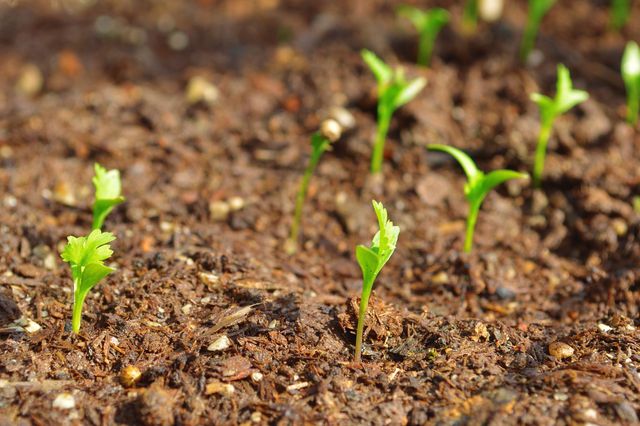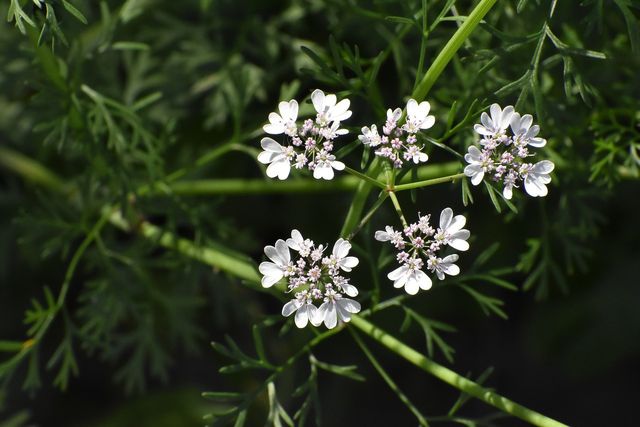
Planting coriander is worthwhile if you often cook Asian dishes. You can easily plant and harvest the popular culinary herb at home in the garden or on the balcony.
Contents
Coriander – origin and use
Coriander originates from the Mediterranean region and the Middle East, but is now grown almost worldwide. Even in ancient Egypt, the spice and medicinal plant was popular because of its many uses: in the kitchen, the plant can be used completely from the root to the leaves, and from the fruits are extracted essential oils that are used in natural medicine and cosmetics – good reasons to include cilantro in your herb bed.
Planting cilantro: location and care

Coriander plants initially grow bushy, with leaves reminiscent of parsley. However, the flower stalks have finely pinnate, narrower leaves. Overall, cilantro can grow up to 70 centimeters tall. Growing your own cilantro in the garden or in a pot on the balcony is not particularly difficult.
Location: the optimal location for cilantro depends on what you want to grow it for – partial shade is best for leaf harvesting, and a sunny spot for seed harvesting. In either case, cilantro prefers a loose, calcareous soil in a place protected from the wind.
Planting: Seeds are sown in the period from April to June. You can also grow the plants indoors before planting them in the bed. If you want to harvest a lot of coriander herb, you should place the plants about 20 centimeters apart. If, on the other hand, you are more interested in the fruits, a distance of 5 centimeters is sufficient – in this way you accelerate the formation of flowers.
Care: In the growing phase, you should water the coriander regularly, but afterwards it prefers rather dry soil. You should avoid waterlogging in any case. The growth of coriander is promoted if you weed regularly. You do not have to fertilize the medicinal plant.
Cultivation in a pot: There are no particularities to consider for the cultivation in a pot. For optimal growth, you can add some sand to the potting soil to make it looser. In addition, you should use a pot in which no water can accumulate.
Tip: Cilantro is a good bedding plant for lettuce and cabbage plants, and because of its strong smell, it naturally keeps away pests such as the cabbage aphid.
Coriander: tips for a rich harvest

Both the herb and the coriander seeds are used in cooking. However, they differ significantly in taste: the leaves are perceived as tart, sometimes also soapy, while the dried fruits taste spicy and rather nutty.
Especially in South America and Southeast Asia, the leaves are used to refine dishes. In Europe, it is rather the seeds that are used as part of spice mixtures. In Thailand, coriander root is used like parsley root is used here.
Coriander seeds can be harvested as early as four to six weeks after sowing, from June to July. Because the plants shoot quickly, you can plant several times in one season.
You should harvest the seeds when they are light brown in color. Cut off the flower stalks and let them dry in the sun. After that, you can gently shake off the dried fruits and use them either as a spice or for the next sowing.
You can harvest the coriander herb at any time. It is better to use the lower leaves: this way you do not disturb the growth of the rest of the plant and they taste more aromatic. Always harvest the leaves before flowering, after that they get a bitter taste. If you only want to harvest the herb, you can also prune the plant so that it doesn’t even start to flower.
Coriander is not only interesting for humans as a spice and remedy: The flowers are particularly popular with bees and other useful insects. The healthy plant is thus a perfect addition to any garden.

